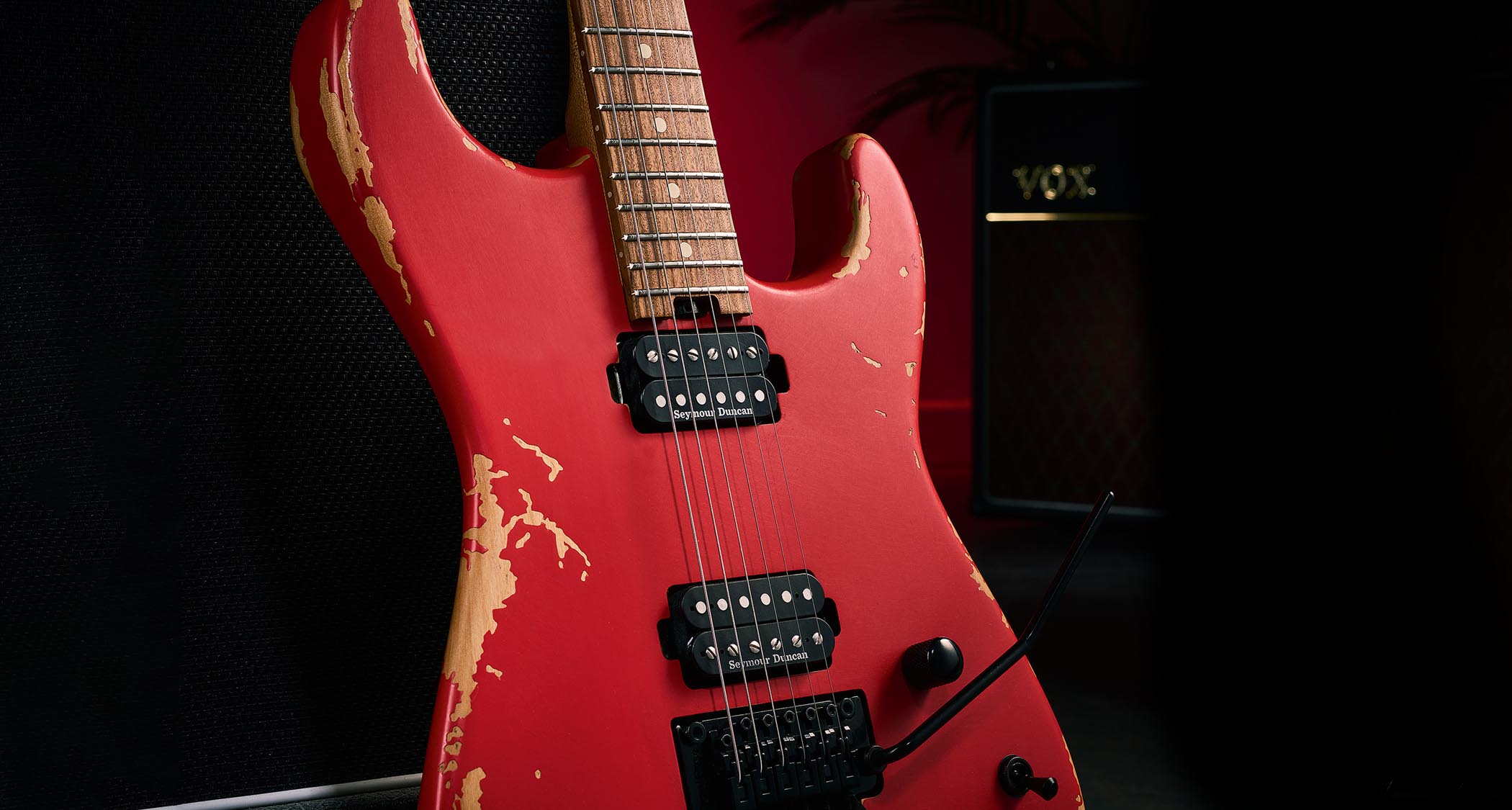Guitar World Verdict
Overall, it’s a hard-rocking double-cut that harks back to the golden age of the genre, and it does so very well.
Pros
- +
Great playability combined with classic looks.
- +
Familiar tones.
- +
Some modern appointments.
Cons
- -
Slightly limited in places when it comes to features.
You can trust Guitar World
It’s a crowded table in the Fender household. Outside of the obvious Fender and Squier-branded instruments sit its ‘specialist’ brands, including Gretsch, Jackson, EVH and Charvel.
Excluding the former, which wears its unmistakable niche indelibly, you might think that the latter three brands present quite the overlap: three very well-respected names that all have their roots in hard rock and metal. However, each one also has to fight for its place, and we think it’s pretty clearly delineated.
The EVH brand is very pointedly an execution of Eddie Van Halen’s ethos, which appears to be continuing faithfully under the watchful eye of Wolfgang Van Halen. Jackson has things covered at the more contemporary, heavier end. Which just leaves Charvel.
For those who are not aware, Wayne Charvel himself started his career as a luthier at Fender, before leaving to set up his own modding and repair shop, which offered refinishes and upgrades to out-of-warranty Fender instruments.
Grover Jackson bought the brand in the late ’70s and, thanks to its OEM parts business and later its own instruments, Charvel became a leading light in the hot-rodding trend of the ’80s, offering souped-up, svelte guitars aimed at players with licks so hot they’d melt your platforms as well as your face.
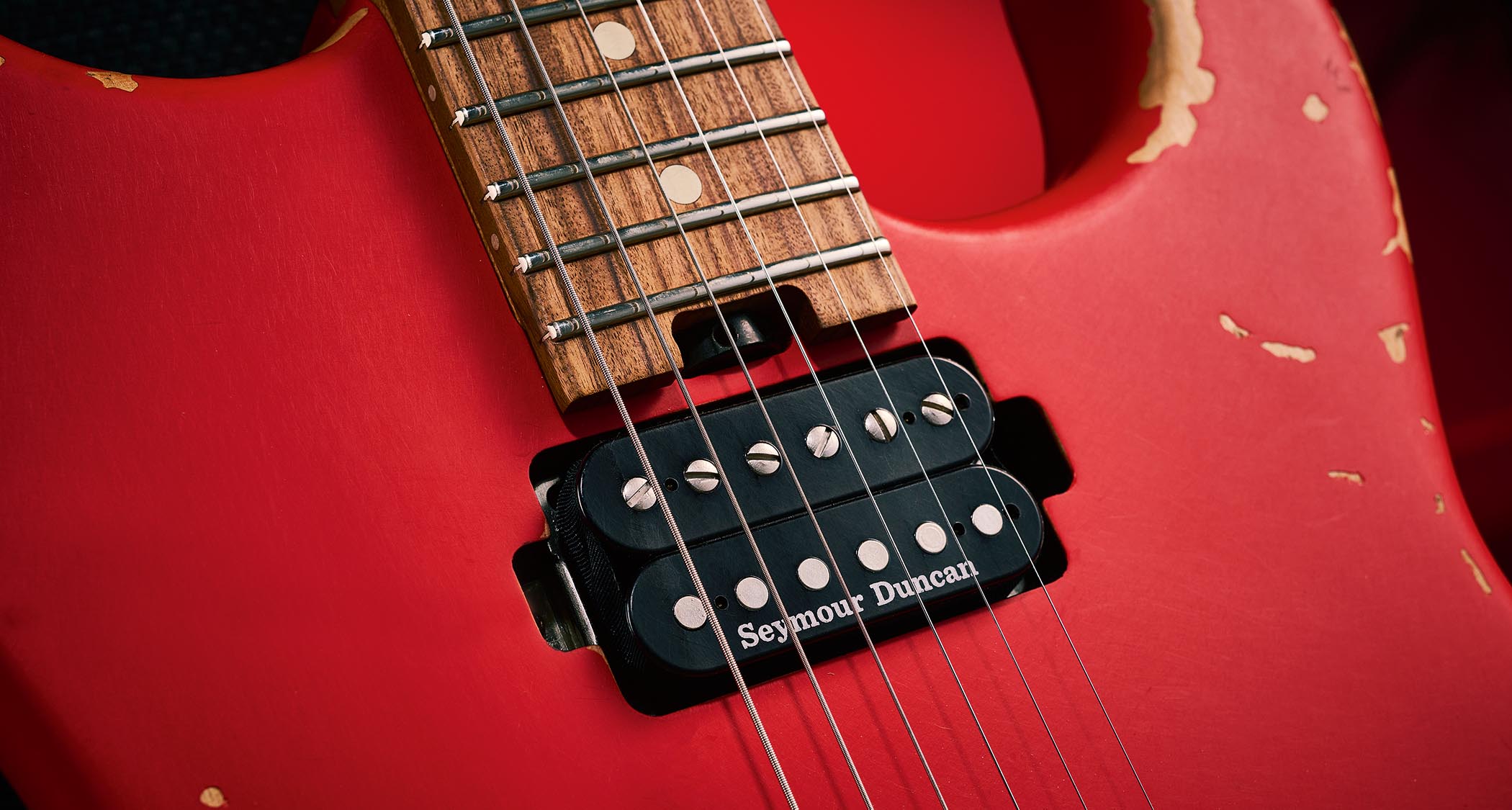
Coming full circle, Fender acquired Jackson and thus Charvel around 20 years ago. And just as well. Because while Charvel has dabbled in various alternative designs over the years – such as the PRS-looking Questar, slightly pointier LS shape and Jazzmaster-inspired Skatecaster – it’s the SuperS shapes and configurations that we really associate with classic Charvels.
Feel & Sounds
With the threat of lawsuits out of the way, this meant we could now benefit from proper Fender-approved shred machines that didn’t look out of place (Fender Heavy Metal Strat, anyone?).
More recently, it’s culminated in the Pro Mod import line, featuring Charvel’s San Dimas and So-Cal designs in Dinky, Style 1 and Style 2 configurations. Which brings us to our review guitar.
This San Dimas is identifiable by the sans-scratchplate body and direct-mounted pickups, and its Style 1 tag refers to the fact that this guitar features a Strat-style double-cut body (Style 2 is Tele-shaped).
While Charvel’s pedigree might conjure images of metallic, primary-coloured finishes covered in glossy lacquer, this version of the San Dimas shows us what becomes of Sunset Strip-dwelling rock tools after the smoke machine has long depleted.
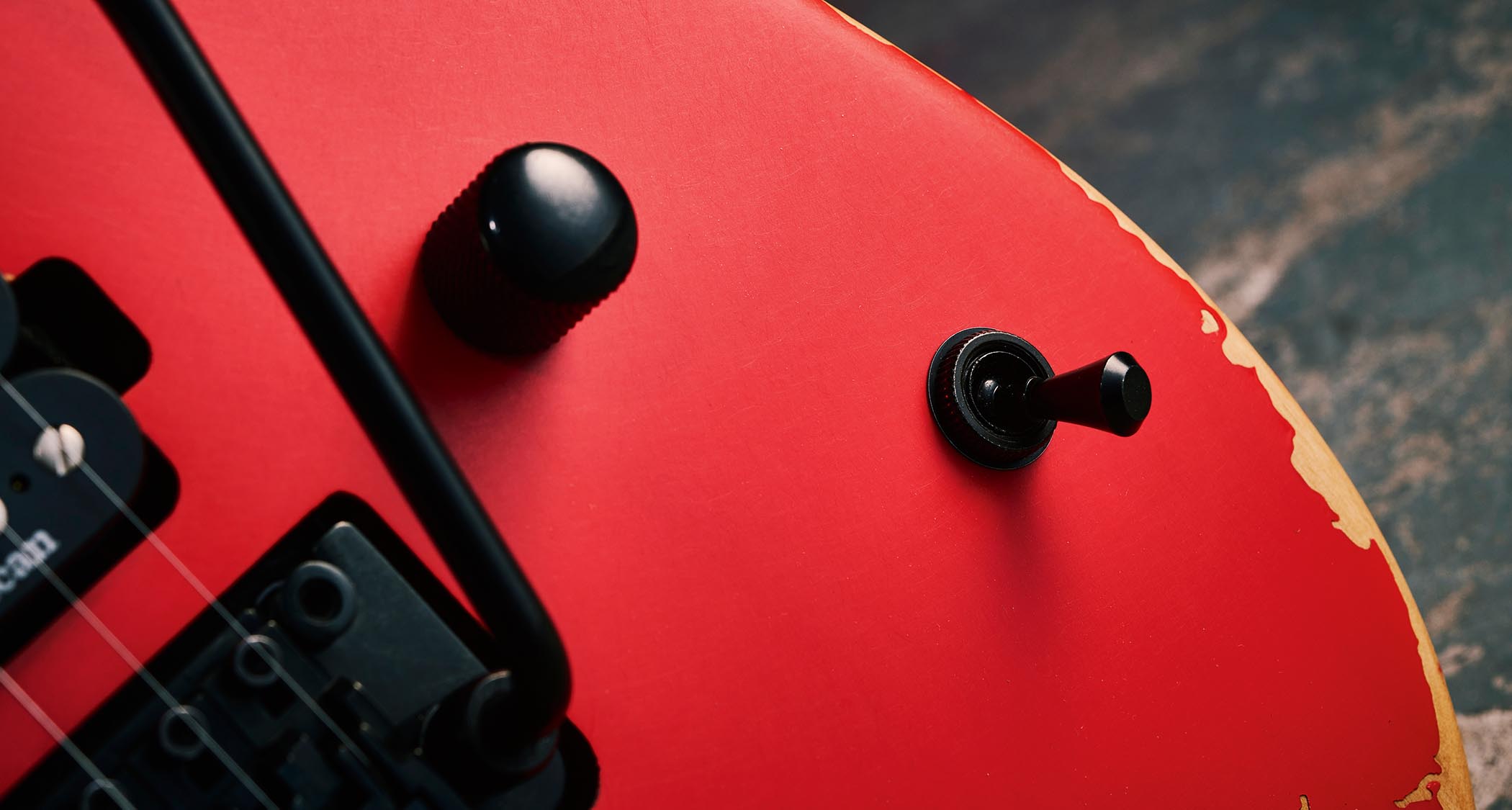
Being made in Mexico, the relic finish has undergone treatment in the same facility as Fender’s Road Worn series, and as well as our review model’s Orange tint, this guitar also comes in Black and White with the same ageing.
But don’t let the 40-year throwback look fool you because while there’s a lot of tradition going on here – including a Strat-style square heel, 22 frets, clay-dot inlays, a Floyd Rose and a classic Seymour Duncan JB/’59 pairing – it’s met by some modern features, too.
These come in the form of a 305mm to 406mm (12- to 16-inch) compound radius fingerboard with rolled edges, ‘speed neck’ profile and a body-end truss rod adjustment wheel.
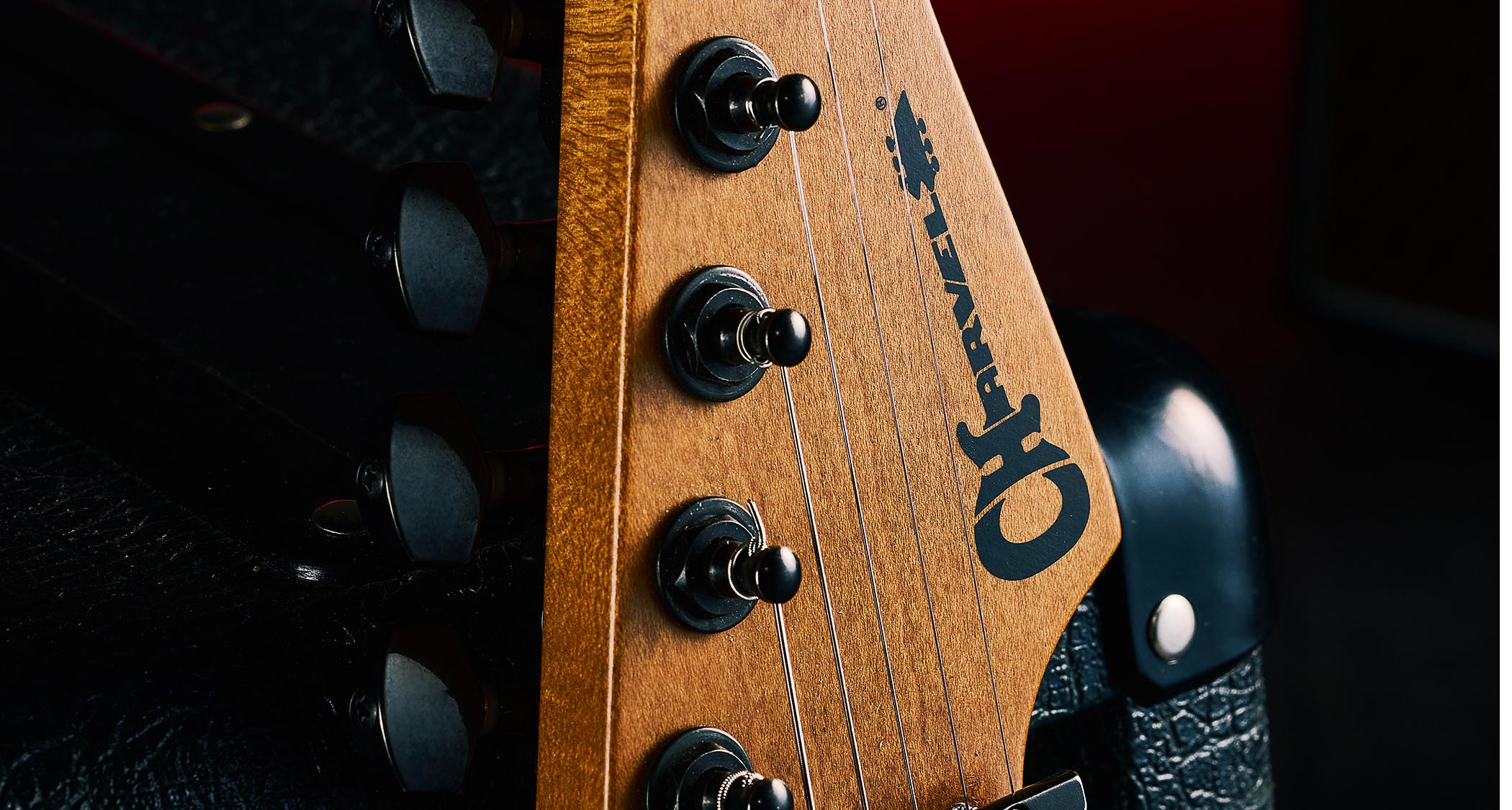
In the flesh, the Orange finish is more of a paled red, and the satin neck (rubbed urethane gel finish) matches the wear with a lot of darkened/faux-grubby spots. It’s apparently built for comfort as well as speed, though, with the thin profile feeling forgiving to our fretting hand as we anchor our thumb for barre chords, while also allowing us to put our foot down for single‑note runs up the neck.
It’s thin but doesn’t feel cramp-inducing like some shredder necks can, and big bends are aided by the increasingly wider radius, as well as the highly polished frets. It’s here that we start to feel the crossover between family traits, with the playability and finish coming very close to the EVH Frankenstein Relic.
But our Charvel has the benefit of having an additional humbucker wired in from the factory. It’s a pickup pairing we’ve seen countless times over the years – and for very good reason.
The bridge-position JB and neck-position ’59 work seamlessly together, with the ’59 delivering a punchy example of a neck humbucker: slightly hollowed without being too scooped and, at least in this format, light enough on the bass end to maintain some clarity.
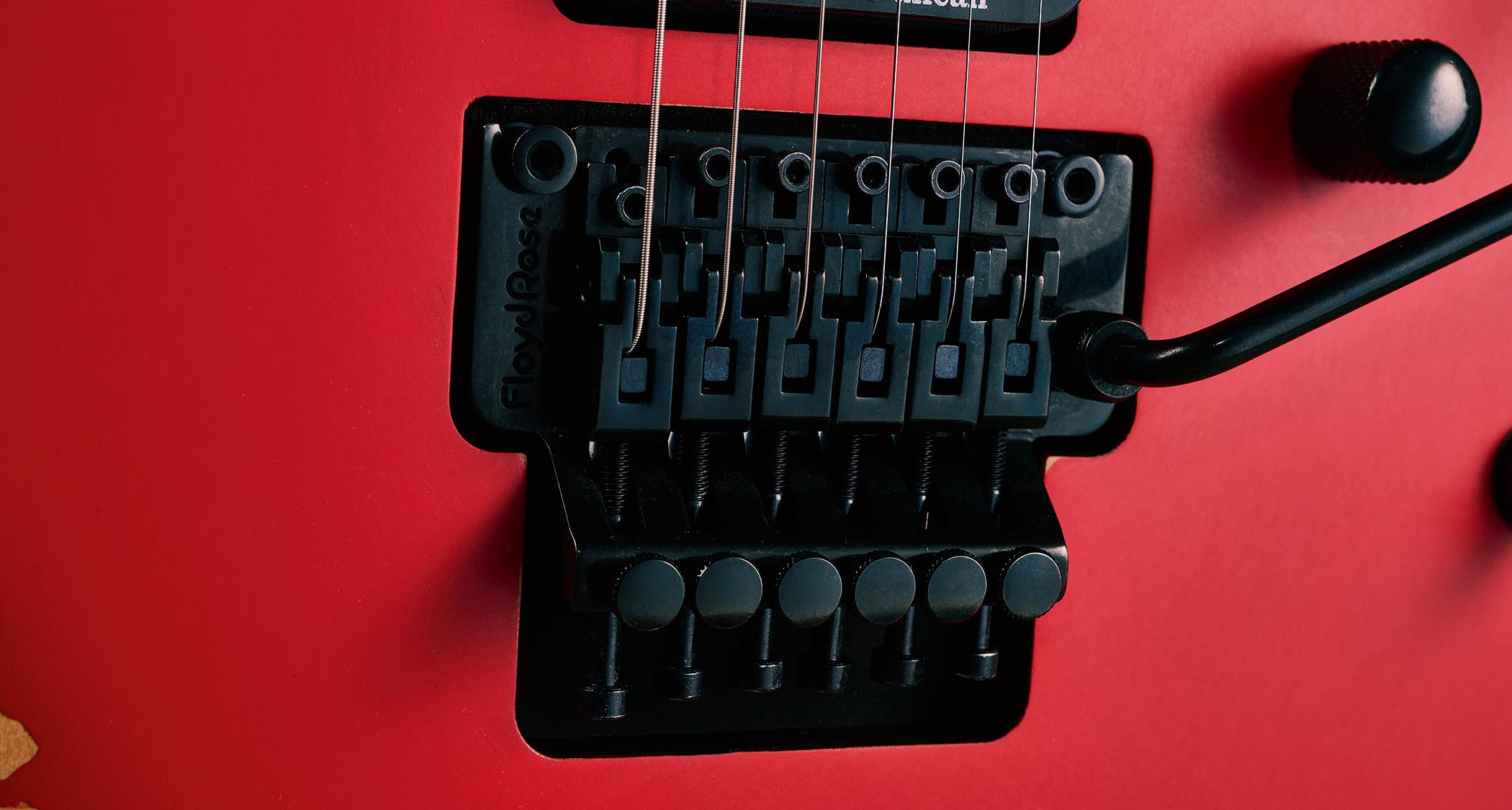
Flicking to the bridge, the JB gives us a shift in gain and a bump to the midrange. There’s enough of a contrast that our clean setting turns crunchy by simply changing the pickup selection, and the sometimes-overlooked middle position combines both voices nicely in a way that we think will see it get a lot of use. This is important, given the sparse single volume control.
It would have been nice to see some extra options, electronically, with a coil-split being the most obvious. However, the pickup is four-conductor, so in keeping with tradition, this is something that could be an aftermarket addition.
Verdict
We can’t help but think that this San Dimas Relic is caught a little between two eras. On the one hand, it’s a very nice-playing and sounding beefed-up Strat-style guitar. There’s a lot to love – from the feel, sounds and response to the overall quality.
However, if you take a look at the Charvel catalogue, there are multiple San Dimas Style 1 HH models available in their ‘pristine’ form, except they come with a less bare-bones electronic layout (a tone control and pull-push coil-split).
Some players might also miss the additional two frets to make a two-octave fingerboard (you’ll need to look at Charvel’s DK range for that), and while the San Dimas’s traditional leanings are heavily stylised, a more contemporary contoured heel might have been the icing on the cake.
Overall, though, it’s a hard-rocking Superstrat that harks back to the golden age of the genre, and it does so very well.
Specs
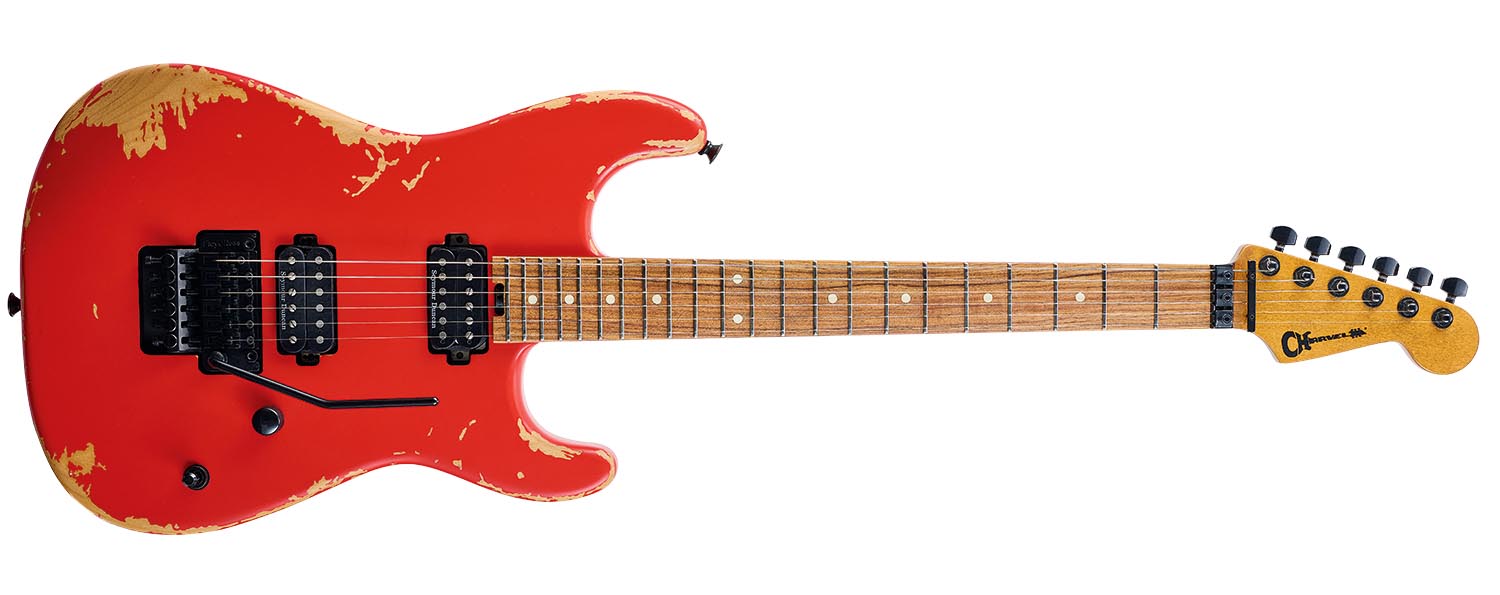
- PRICE: $1,599 / £1,259
- ORIGIN: Mexico
- TYPE: Double-cut solidbody electric
- BODY: Alder
- NECK: Graphite-reinforced maple, ‘speed neck’ profile
- SCALE LENGTH: 648mm (25.5”)
- NUT/WIDTH: Floyd Rose locking nut/43mm
- FINGERBOARD: Pau ferro, cream clay dot inlays, 305-406mm (12-16”) compound radius
- FRETS: 22, jumbo
- HARDWARE: Aged Floyd Rose 1000 Series vibrato, Charvel-branded tuners
- STRING SPACING, BRIDGE: 52mm
- ELECTRICS: Seymour Duncan ’59 (neck) and
JB (bridge) humbuckers, 3-position pickup selector, master volume control - WEIGHT (kg/lb): 3.5/7.8
- LEFT-HANDERS: No
- FINISH: Orange (as reviewed), White, Black – nitrocellulose relic body with satin urethane gel neck finish
- CONTACT: Charvel

Stuart has been working for guitar publications since 2008, beginning his career as Reviews Editor for Total Guitar before becoming Editor for six years. During this time, he and the team brought the magazine into the modern age with digital editions, a Youtube channel and the Apple chart-bothering Total Guitar Podcast. Stuart has also served as a freelance writer for Guitar World, Guitarist and MusicRadar reviewing hundreds of products spanning everything from acoustic guitars to valve amps, modelers and plugins. When not spouting his opinions on the best new gear, Stuart has been reminded on many occasions that the 'never meet your heroes' rule is entirely wrong, clocking-up interviews with the likes of Eddie Van Halen, Foo Fighters, Green Day and many, many more. If he's not playing the guitar, you'll likely find Stuart behind the kit playing Valerie to newlyweds.
“What blew me away was that everyone wanted the curly maple top. People were calling, saying, ‘I’ve got to have the bird inlays’”: Paul Reed Smith on raising the Standard 24, finally cracking the noise-free guitar and why John Sykes is a tone hero
“It combines unique aesthetics with modern playability and impressive tone, creating a Firebird unlike any I’ve had the pleasure of playing before”: Gibson Firebird Platypus review
